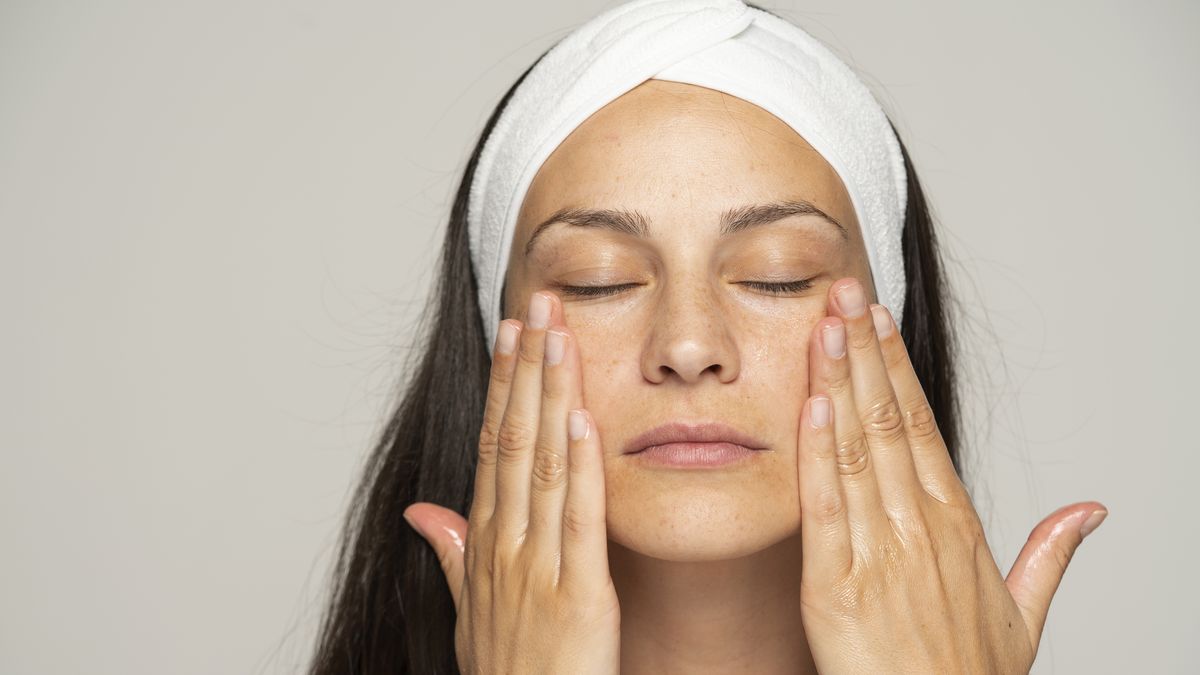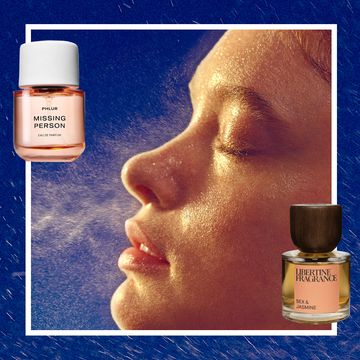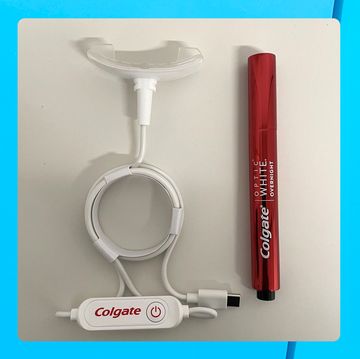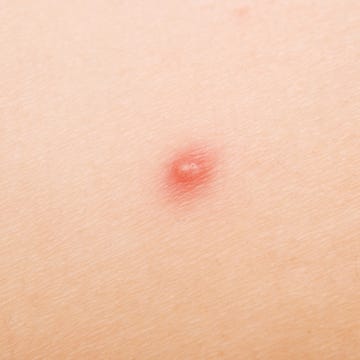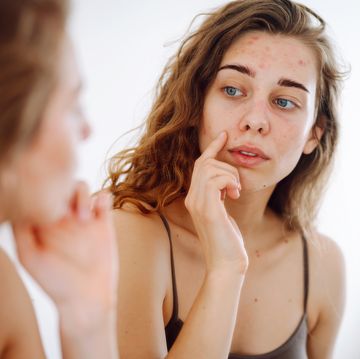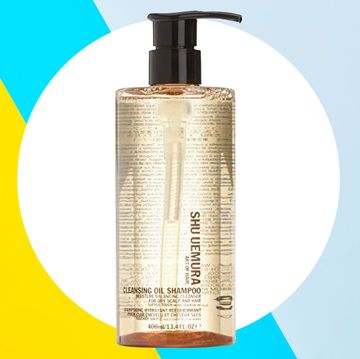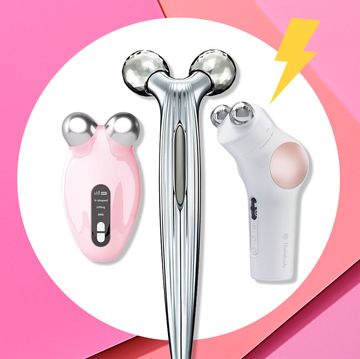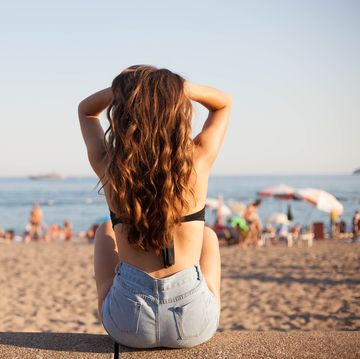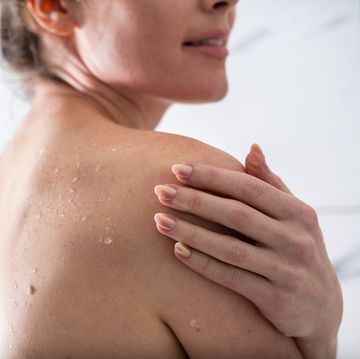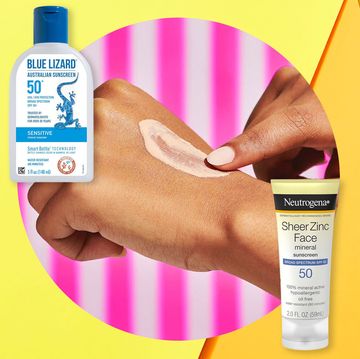If you’ve ever zonked out in the middle of a facial, drifting off while an esthetician rubs the tension out of your forehead (whoops!), then you already know the magic of facial massage. And while it just feels nice, it can also offer legit benefits for your skin.
Facial massage can improve your skin appearance, release tension in your face, and maximize the effectiveness of your beauty products, says Loretta Ciraldo, MD, a dermatologist and the founder of Dr. Loretta skincare. After all, you have almost 30 facial muscles that could use a little TLC!
And while a face massage can be done professionally at a spa, you can totally perform one at home to see similar benefits, says Courtney Rubin, MD, a dermatologist and the co-founder and chief medical officer at Fig.1. In fact, you don’t even need any fancy tools because your (clean!) hands can do the job.
That said, there are a few pointers worth learning before you massage all your problems away. Read on for everything you need to know about the various types of facial massages and how to perform them, according to dermatologists and skin therapists.
What is a face massage, exactly?
The name may give it away, but a facial massage refers to sweeping motions across the face and neck, either with hands or with a facial massage tool such as a roller or gua-sha (a traditional Chinese medicine practice that is used to stroke the surface of your skin), says Dr. Rubin. “Oils are often used for lubrication to allow the hands or massage tools to glide across the skin without pulling, and these motions can be used to relax and smooth muscles, along with encouraging lymphatic drainage and circulation.”
What are the benefits of a face massage?
Besides feeling great and offering a little relaxation, a face massage offers mega benefits when it comes to your skin and overall appearance. Simply put, a facial massage aids in the removal of toxins by stimulating lymphatic drainage, says Liz Anguiano, a skin therapist and shop educator at Heyday Lincoln Park. And by encouraging lymphatic flow, this helps reduce excess swelling or puffiness in the face, which leads to a more sculpted and defined look, adds Dr. Rubin.
Lymphatic drainage and increasing circulation to the skin also helps with the stimulation of collagen and elasticity, explains Anguiano. In other words, don’t be surprised if your skin looks a little plumper and more youthful, because the massage releases muscle tension in the face and jaw which improves skin suppleness and offers a lifting and sculpting effect, adds Dr. Rubin.
And, since the massage soothes tension in the face, this could even help smooth the appearance of fine lines and wrinkles while boosting the overall firmness of the skin, she adds. After all, an older 2002 study published in the International Journal of Dermatology found that 54 percent of women reported supple skin after a face massage, while 50 percent experienced skin tightening.
Last but not least, a facial massage will increase blood flow and give the skin a glowy look, since it increases the penetration of beneficial oils during massage, says Dr. Ciraldo. Whether you use a serum, toner, or face oil, a message essentially helps press the product into your skin to promote the intended results.
What types of facial massage exist?
Face Slapping
Sounds…not relaxing at all, but face slapping can be a game-changer when done right. For the uninitiated: “Face slapping is an intense facial massage, which involves getting your face slapped, pinched, and stroked,” says Edyta Jarosz, master esthetician at Shafer Clinic Fifth Avenue. “It is designed to activate the muscles and increase circulation and oxygenation.” Translation: It’s intended to deliver a more radiant complexion and ease tension.
On top of that, face slapping can stimulate collagen production, Jarosz says. “The face-slapping technique will benefit you if you hold too much tension in your jawline,” she says. However, it’s not a good idea if you have rosacea, acne, or sensitive skin, since the impact of the slaps can exacerbate those.
Jarosz recommends face-slapping with a face lotion or oil for some lubrication, although you can also use a cleansing balm. Ultimately, “it’s all about the pressure and precision of the movements,” she says. “The correct movements of the slapping technique can actually nicely sculpt the face.”
How to DIY it
- After cleansing and exfoliating, dispense moisturizer or face oil onto your fingers.
- Using firm but not painful pressure, “slap” your hands in an upward motion, keeping your fingers loose. “Using movements that are too intense can cause bruising, and this is obviously something we want to avoid,” Edyta says. Start near the jawline and work your way up to the cheeks.
- Repeat until the product is absorbed.
Facial Acupuncture
While you might already be familiar with—or even a fan of—traditional acupuncture, which involves needles inserted at shallow, strategic points of the body, its lesser-known counterpart is an acupuncture facial. That’s right: We’re talking needles in your face.
“Acupuncture works with lines of energy that run through your body, and all of those lines either start or end on the face—so it can be beneficial for overall balance and well-being,” says licensed massage therapist and esthetician Laura Conroy, who’s the director of education at The Well, a wellness center with various locations. Applied to the face, it can deliver skincare benefits, too. “Needling certain points on the face can help address fine lines and wrinkles, help increase elasticity, and improve overall skin health over time,” she says.
After skin has been cleansed, lightly exfoliated, and massaged, says Conroy, the facial acupuncture begins; it usually involves needles in both the body and face. ("To balance your energy," she explains.) You'll then wait 30 minutes for the acupuncture to do its thing.
If you want to DIY it (or are just a needle-phobe), consider acupressure; it also stimulates the face and body at strategic points, but without the sharp stuff. Plus, it has perks of its own: “Many traditional facial massages include acupressure points to help with lymphatic drainage, relaxation, and balance,” Conroy says. “Acupressure can be a great stress reliever.”
How to DIY it
- On either clean skin or after you apply your moisturizer—totally your call—use clean fingers to press down at various points of your face for several seconds.
- Using the pads of your fingertips (not your nails!), press on the center of the chin, halfway between your lips and the bottom of your chin.
- Using your index fingers, repeat at the corners of the lips, at either side of the nose (where it meets your laugh lines), and on your third eye, which is directly between the brows.
- Use your fingers to apply upward pressure along the cheekbones and at the inner edge, middle, and ends of the brows.
Fascial Facework
A fascial facial is kind of like foam-rolling—but for your face. First, let’s talk fascia itself, which is comprised of collagen and elastin. “It’s the scaffolding that weaves throughout the body,” says Lauren Roxburgh, a personal trainer, bodywork practitioner, and fascia expert. “Think of it as this cotton web that sits right under the skin and also wraps around the muscles.” Sandwiched between the dermis (the lower layer of skin) and the muscles, this matrix is closely intertwined with the lymph system, the nervous system, and the endocrine system, she says.
From a beauty perspective, “if you have knots or build-up, it decreases the blood circulation and lymph flow—and your ability to produce collagen,” says Roxburgh. Massaging the fascia involves putting pressure on it, which is a super-important step. (Unlike acupressure, which applies pressure to individual points of the face, fascial massage is all about the lifting and smoothing strokes—think gua sha, but without the tool.) “When you release the pressure, the fresh, oxygenated blood is going to come back into the area,” says Roxburgh, who notes that this blood can help supply fresh nutrients to keep your collagen-producing cells chugging.
Roxburgh recommends doing it first thing in the morning, after applying serums and using a face oil.
How to DIY it
Starting in the center of your face, use your fingers to apply pressure as you move them towards the outer face, holding them at the outer point for several seconds. “It’s going to help feed it to the lymph nodes,” she says. With each movement, you should flush it out from the ears to the jawline.
- Beginning from the outer corners of the nostrils, move your fingers around the eyes and up under the eyebrows, and out to the ears.
- Repeat from the center of your forehead to the temples.
- Repeat from the outer corners of the nostrils directly out over your cheekbones and towards your ears.
- Repeat from the outer corners of the mouth, moving over the cheeks and towards the ears.
What not do when performing a facial massage:
- Avoid tugging on the skin around your eyes since this area is particularly sensitive, notes Dr. Rubin.
- If you have any broken skin, including a pimple or open sore, do not massage over it. Instead, Dr. Ciraldo recommends applying Aquaphor Healing Ointment to the affected area.
- Never pull at the skin and always use a serum, oil, or hydrating and balancing toner to allow for a smooth glide, says Dr. Rubin.
- Do not apply excessive pressure, says Dr. Ciraldo. Pressing harder on your face will *not* speed up results and may even cause sensitivity or bruising.
How often should you get a facial massage?
There’s no hard and fast rule, but Dr. Ciraldo suggests a few times per week. “If you see benefits from facial massage, and I find this is most commonly seen in younger women up to late forties, you can do it once or twice a week,” she explains. That said, if you find your face is particularly puffy in the morning, you can do a gentle face massage daily to improve the lymphatic flow and circulation to reduce puffiness, adds Dr. Rubin.
Deanna Pai is a freelance beauty writer and editor currently based in New York. She has more than 10 years of experience writing about beauty and wellness.
Andi Breitowich is a Chicago-based writer and graduate student at Northwestern Medill. She’s a mass consumer of social media and cares about women’s rights, holistic wellness, and non-stigmatizing reproductive care. As a former collegiate pole vaulter, she has a love for all things fitness and is currently obsessed with Peloton Tread workouts and hot yoga.
